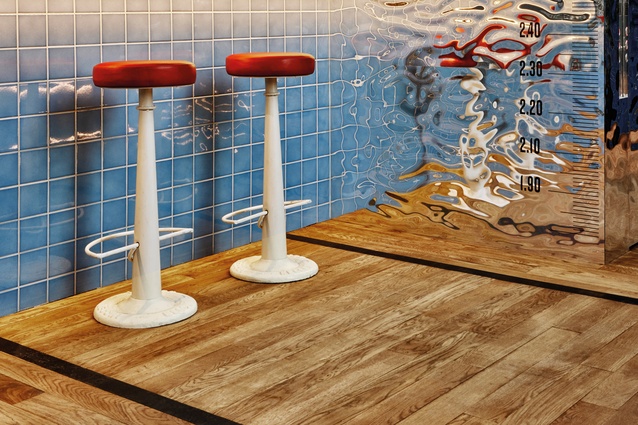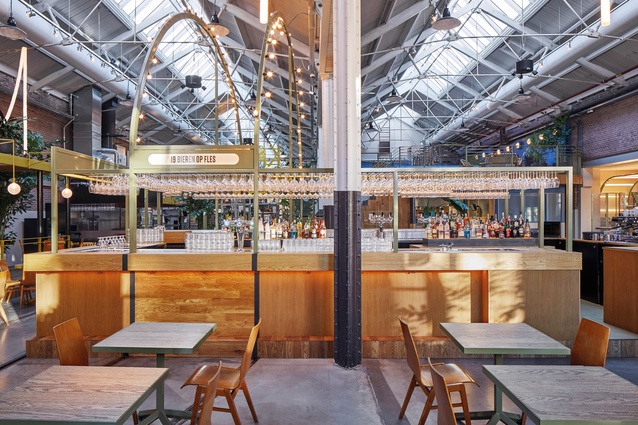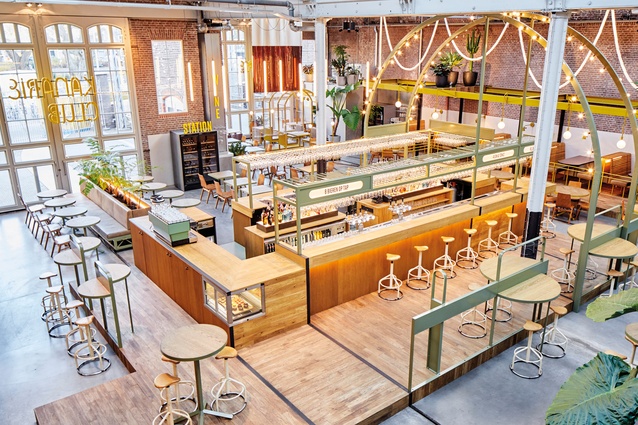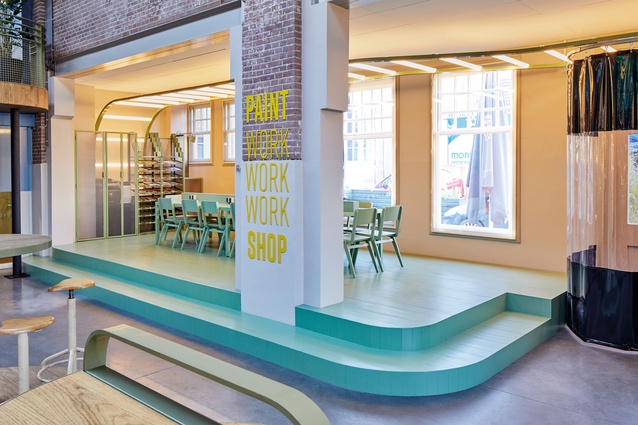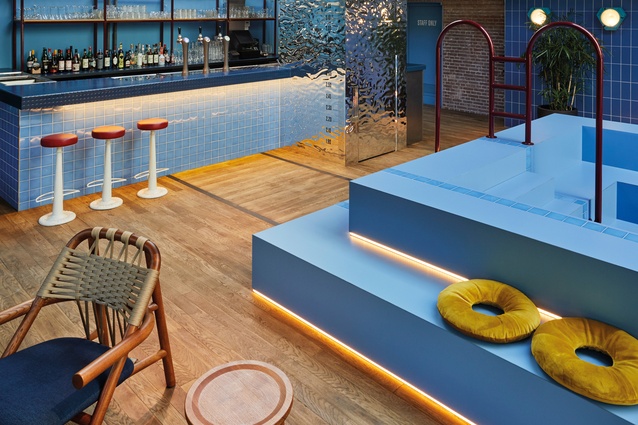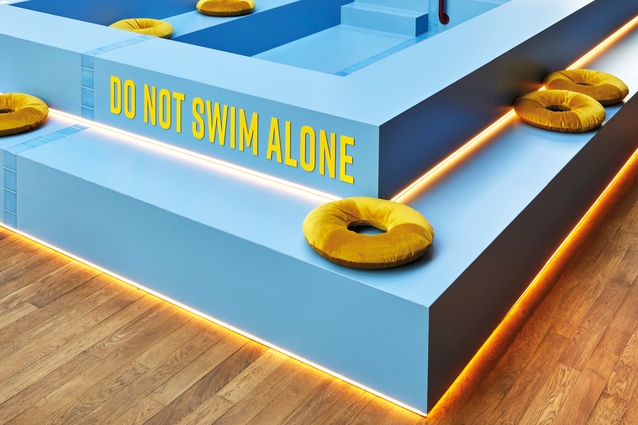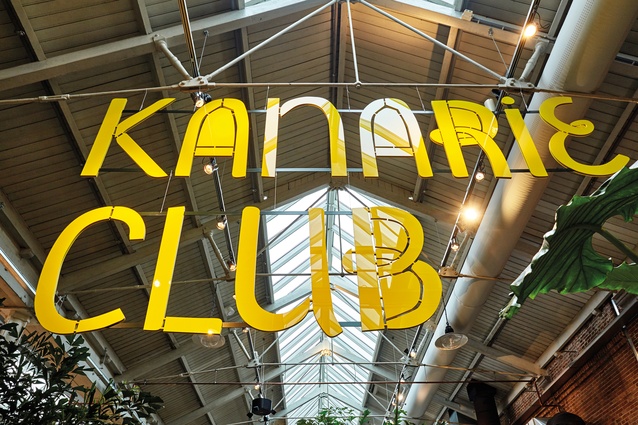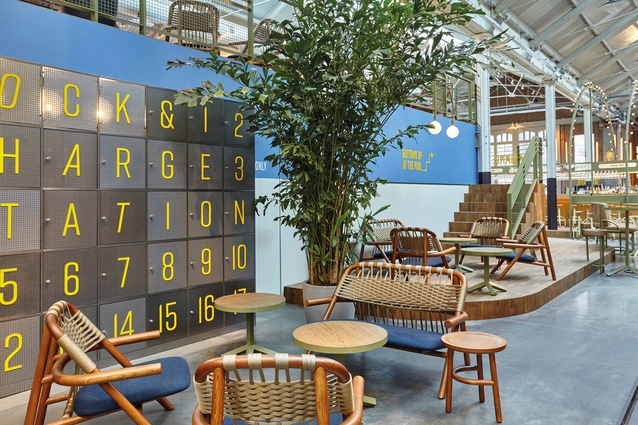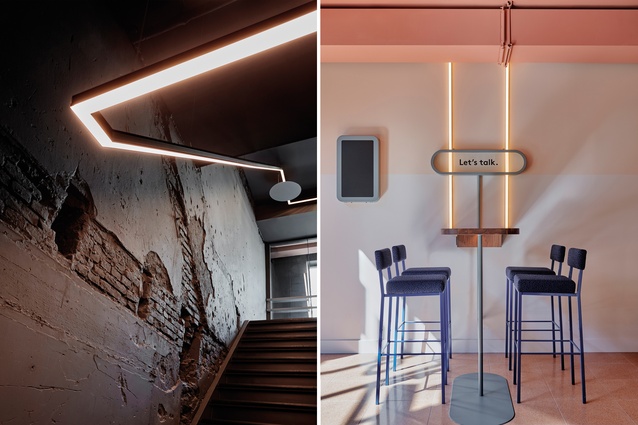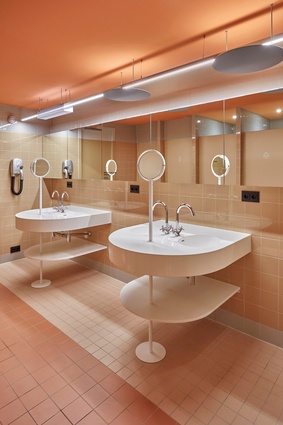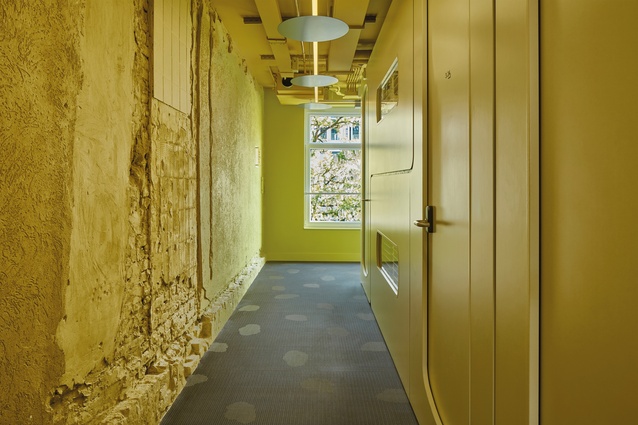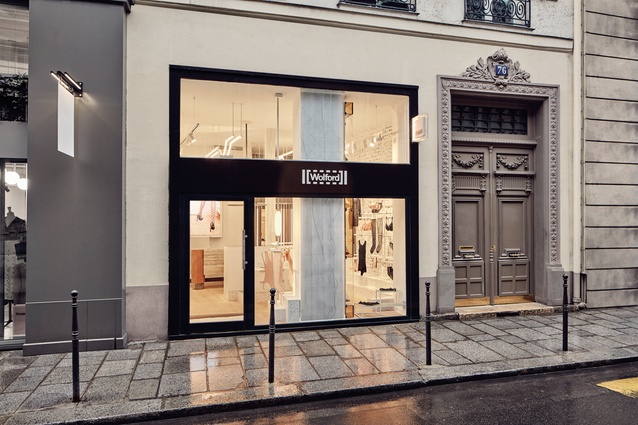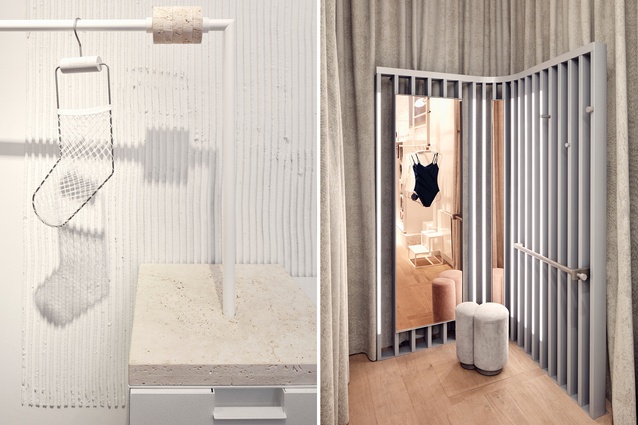Studio Modijefsky Amsterdam
An all-female design firm right next door to Amsterdam’s Red Light District is proving to be a game-changer in the region’s hospitality sector.
Studio Modijefsky is tucked down a discreet alleyway in Amsterdam but its influence on the city’s hospitality scene is anything but inconspicuous. Founder Esther Stam works with her all-female troop from a site sandwiched between Dam Square and the Red Light District – areas known more for throngs of tourists than for game-changing design. It wasn’t a conscious decision to be all female, Stam tells me, and she’s not saying it will always be that way. But she is super-proud of the fact.
The team always starts a project with a period of extensive research, the fruits of which line the reception walls: presentation books filled with concepts and sketches, each a crafted keepsake. “I look at the existing building, the traffic routes, what used to be there before – anything specific to the space and to the commissioning brand,” says Stam, leafing through one such book. “Maybe it’s the way I was schooled or professionally raised, but I dive deep into the history surrounding a brief.”

History is in Studio Modijefsky’s DNA. Stam founded the firm in 2009, and Modijefsky is her mother’s surname, a name Stam herself would have loved to carry on. Now, through her work, she does. Stam had previously worked at an interior-architecture office for three years after studying interior design at Willem de Kooning Academie in Rotterdam. She then moved to Amsterdam and started out on her own, doing “whatever came on my path – train stations and all. Slowly, I moved into hospitality, something I like personally.”
The move may have started slowly but it coincided with a hospitality boom in Amsterdam. “The studio is thriving from the way Amsterdam is growing and developing,” says Stam. “But it also means we have to find a good way of defining spaces in different ways. Since the density is so great here, the only way to survive is to be outstanding, to offer something unique. Otherwise, there are 10 other places you can go to.” Amsterdammers like to bounce around, too: “just as freelancers might change where they work from, people here get inspiration from new environments,” says Stam.
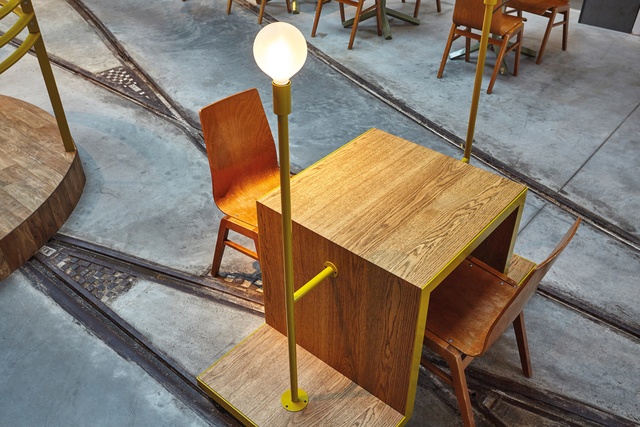
“Plus, in Amsterdam, hospitality is an extension of the home. Compared with somewhere like Rotterdam, where you often meet in people’s homes, here, you go out all the time.”
After analysing everything they can in the concept phase, Stam and her team end up with multiple spatial stories and with pages of potentially interesting inclusions. They then write a new story with the various ingredients, which Stam likens to bricks or building blocks. “Maybe there used to be a supermarket there, or a gym. What would that mean for the conversion?” And, if there was a supermarket or a gym there before, that doesn’t mean Studio Modijefsky will start designing tables that look like checkouts or string up a dumb-bell chandelier. “We don’t do anything explicit,” says Stam, picking up the presentation book for Kanarie Club.
Attached to a tram depot turned cultural centre, the restaurant/bar/co-working café used to be occupied by squatters, who, at some point, made a pool using rainwater collected from the roof. Studio Modijefsky translated the site’s story into a spatial narrative, dividing the generous floor plan into ‘workshops’ defined by different material and colour palettes. Tram-related details – “not gimmicky, though”, affirms Stam – include the preservation of original tracks that extend into furniture and other interior structures. And, of course, there’s a Pool Bar upstairs.
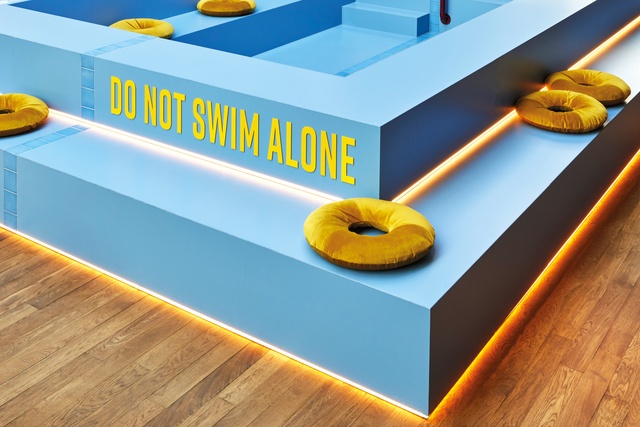
Another constant in Studio Modijefsky’s portfolio is the considered play of texture, materials and tactility. For newly opened Ramona (the namesake of which Stam imagines is the daughter of Bonnie, another bar on which the studio is currently working; Studio Modijefsky sometimes comes up with the names of its projects, too), the designers used a lot of wood in different ways, as well as “weird material combinations like brick and marble”, says Stam. They translated existing façade details into custom graphic elements and put a modern spin on vintage glass for lighting. “There’s a mix of the old-fashioned with more-contemporary materials, like linoleum.”
With Amsterdam’s hospitality scene expanding so rapidly, turnover is inevitable. Is longevity something Stam considers in her designs, when interiors in this genre often have short lifespans? “We want to make things that are time-proof,” she says, “rather than something like a hot-dog spot that’s there only because hot dogs are hip right now. We can’t prevent businesses from being taken over, but we always want to create things that fit the context and aren’t just the new ‘it’ thing. I wouldn’t, say, do something entirely pink just because it’s the 2019 colour. But I also can’t say I’m not sensitive to certain materials because they’re new and interesting. I like investigating new materials – and new ways of using materials.”
Studio Modijefsky’s portfolio may be largely hospitality based, but things are changing. It’s a self-fulfilling prophecy of sorts: design a few restaurants and cafés and you make a name for yourself in those typologies. The studio also gains a lot of repeat business in Amsterdam, particularly from bar clients.
“I wouldn’t get bored with hospitality but I have never believed we need to do only hospitality either. This team is up for a lot,” says Stam. True to her words, the designers are starting to move beyond this base – and beyond the Netherlands. Following on from the success of a flagship store for hosiery brand Wolford in Amsterdam, for example, two new SM-designed retail spaces have just opened in Paris.
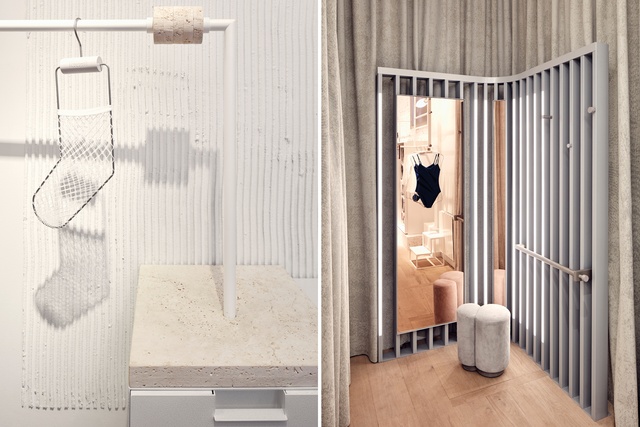
Unlike many of the hospitality hotspots on which they’ve worked, Wolford had a strong, established identity. The team went to the factory and were heavily inspired by the techniques they witnessed. “It was like Charlie and the Chocolate Factory,” says Stam. “We generated a lot of the store’s design language from that factory visit.”
Whatever the genre, Studio Modijefsky’s process remains the same: analysing the routing, context, relationship with the surrounding environment, ad infinitum. Stam tells me she’d also like to design something completely different, like a spa in the mountains. Aside from expecting a material-rich interior embedded with meaning, it’s hard to picture much more of the potential results. After all, it depends on what story the designers distil.
This article first appeared in Interior magazine.


